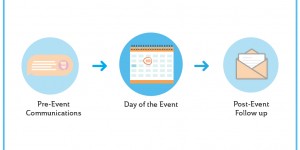We recently sat down for a Q&A with our new Development Strategist, Amy Boroff. Amy shared a bit about her experience and what excites her about joining the Action team. She also offered some advice for nonprofits looking to advance their communications.
During her 20 plus years of professional experience, she served as a Development and Marketing Director, held corporate positions, and even launched her own business. We are very excited to have Amy as part of our team. Keep reading to learn more about the newest member of the Action team!
Briefly share with us a bit about the organizations you worked with before Action.
I launched my nonprofit career at the National Multiple Sclerosis Society as an Event and Walk-A-Thon Manager in 1999. Then, after many years and several positions working for corporate with John Wiley & Sons, Inc., I found a home at Junior Achievement of New Jersey.
At Junior Achievement of New Jersey, I worked to educate young people about fiscal responsibility, entrepreneurship and workforce readiness. I truly got to love the organization through volunteering with them. When not volunteering, I stepped up as an Event Manager, Marketing and Social Media Manager, Fundraising Manager, Editor, and ultimately Development Director. Anyone who has worked in the nonprofit world knows how many hats we wear.
As the New Jersey chapter grew, I was ready to use the entrepreneurial skills I’d learned throughout my career. Ironically, many of those were the same skills I had brought to numerous NJ youth through Junior Achievement. So my husband and I opened a brick and mortar storefront, a children’s retail and event space, in our hometown of Fanwood, NJ, where I also serve on the Board of Education.
What excites you about joining Action?
I was very selective when I decided I wanted to work with nonprofits again. I knew I wanted to leverage my experience to make a bigger impact. But It didn’t take long. After my initial interview, I knew I wanted to contribute to the current vision of Action. This group has been helping independent schools and nonprofit organizations enhance their communications and improve their fundraising for years. I am really excited to be a part of that journey.
However, we know the nonprofit world is constantly evolving. There are multiple channels of communication and sources of data that are available. But many organizations are not using these strategies to their full potential.
I just love the strategic team that has been put together at Action. Together, they bring thought leadership, design, marketing technology, data interpretation, and other skills to the table. Personally, as a Development Strategist, I bring my experience in nonprofit and community development, fundraising, marketing and communication, and entrepreneurship.
I get excited to meet with nonprofit organizations and gain an understanding of their mission and goals. We’re like a giant think tank that solves problems and executes solutions. Once we understand an organization’s goals, our team comes together to dig deep into their donor metrics and communication strategy so we can develop and execute the right plan that helps them fulfill their fundraising or marketing objectives. That excites me.
Based on your experience working at nonprofits, what is the one message you want to convey to others about how to advance their communications?
That’s a loaded question – and certainly specific to each individual organization and their current environment. On a large scale, it’s important to look at what is currently in place before any organization takes steps to advance their communications. Messages across all platforms should be consistent (internally, interdepartmentally, online, and offline), meaningful and measurable.
Because there are so many methods of communication, fundraisers tend to think they’re communicating as long as they are delivering messages and getting the word out. However, I believe an effective strategy that advances communications, increases fundraising potential, and builds support, requires a look across the entire organization’s communications outreach and culture. Effective communication requires consistency, engagement, purpose, meaning, and always, a method of measurement.







